The operator (PTTEP Australasia) estimated 64 tonnes per day (400 barrels) of crude oil were being lost each day. It should be noted, however, that this estimate could not be confirmed at any time during the incident, nor was it possible to provide any more accurate assessment. The leak continued until 3 November 2009. Response operations continued until the well was capped on 3 December 2009 (105 days).
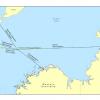
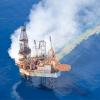
Courtesy: Mark Hamilton Photography
AMSA was advised of the oil leak at approximately 10.00 am, and within 15 minutes implemented the National Plan to Combat Pollution of the Sea by Oil and Other Noxious and Hazardous Substances (National Plan). The Australian Marine Oil Spill Centre (AMOSC) in Geelong was advised and activated at 10.35 am.
Over 130 surveillance flights were conducted throughout the duration of the operation commencing on the first day of the incident.
These flights:
- gathered oil spill intelligence
- gathered environmental data
- directed the surface vessels and dispersant spraying aircraft to heavy concentrations of oil.
At around 7.00 pm on the first day, the Northern Territory Designated Authority for the platform formally passed responsibility for the clean up to AMSA, in accordance with agreed National Plan arrangements.
Throughout the incident, the majority of observed oil remained within 35 kilometres of the platform, with patches of sheen and weathered oil reported at various distances and in different directions as wind, temperature and currents varied. The benign conditions experienced during most of this period permitted containment and recovery operations, but to some extent also hampered the natural breakup of oil.
Aircraft observers reported sheen at Ashmore, Cartier and Hibernia Reefs on several occasions, however there was no reported impact on any shoreline or reef.
Immediate response actions included:
- deploying aircraft (including a Hercules C-130 aircraft from Singapore)
- deploying AMSA personnel
- additional dispersant (initially approximately 50 tonnes) to supplement stocks at the AMSA Darwin equipment stockpile.
AMSA’s operational response was reviewed daily based on observations from morning surveillance flights.
Equipment from oil industry stockpiles in Singapore and Geelong, as well as AMSA stockpiles in Darwin and other states were used in the clean-up operation. Response personnel were provided by the oil industry, AMSA and through National Response Team arrangements. This included assistance from all states and the Northern Territory. Assistance was also provided by New Zealand personnel in accordance with formal arrangements between Australia and New Zealand.
In total, 247 personnel were involved in the response, with many undertaking more than one rotation through at least one of the positions in the response organisation.
Details:
- AMSA—25 from all four of AMSA’s divisions
- National Response Team and support
- 5 consultants
- 5 from NT
- 14 from WA
- 26 from NSW
- 7 from Victoria
- 6 from Tasmania
- 19 from SA
- 19 from Queensland
- New Zealand—5
- Oil Spill Response (Singapore)—21
- AMOSC—20
- 4 permanent staff
- 3 consultants
- 13 core group members from Santos, Esso, Caltex, Woodside and Shell
- Asia Pacific Applied Science Associates—1
- Australian Maritime Resources—15 (fixed wing dispersant spraying)
- Aerorescue—56 (Dornier aircraft)
- Hardy Aviation—1
- Pearl Aviation—1
- Shorelands Group—1
Dispersant spraying operations commenced on 23 August 2009 and continued until 1 November 2009:
- The Hercules C-130 sprayed a total of 12,000 litres of dispersant on 23 and 24 August.
- Aircraft contracted to AMSA as part of Australia’s Fixed-Wing Aerial Dispersant Capability continued spraying operations based out of Truscott aerodrome from 25 August until 2 September, spraying 32,000 litres of dispersant.
- Vessel spraying operations were carried out from 30 August to 1 November, with 118,000 litres of dispersant sprayed.
Observations and sampling indicated dispersants were highly effective in assisting the natural process of degradation and minimising the risk of oil impacts on reefs or shorelines.
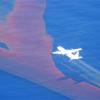
Photo: AMSA
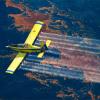
Photo: Mark Hamilton Photography
The six types of dispersant used were approved for use within Australian waters, having passed laboratory acute toxicity testing requirements applied under National Plan arrangements.
These included:
- Slickgone NS
- Slickgone LTSW
- Ardrox 6120
- Tergo R40
- Corexit 9500
- Corexit 9527.
Containment and recovery operations commenced on 5 September 2009 and continued until 30 November 2009, although no recoverable oil was located after 15 November 2009. These operations involved two vessels working together joined by a 300 metre containment boom, with a skimmer operating in the boom pocket to recover the oil.
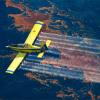
Photo: AMSA
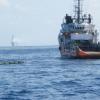
Photo: AMSA
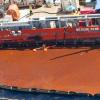
Photo: AMSA
For much of the response, two pairs of vessels undertook these operations. A total of 844,000 litres of product was recovered. It is estimated 493,000 litres of this oil-water mixture was oil.
The Department of the Environment, Heritage and the Arts (DEWHA) reported one confirmed report of an oil affected sea snake and 29 oil affected birds found in the spill-affected region. Of these, 22 birds died as a consequence of being oiled. No confirmed reports of oiled whales or other cetaceans were received. No other confirmed reports of affected wildlife were received despite extensive aerial and water-based patrols in the area.
Outcome
Overall, the response operations were successful in preventing oil from impacting on sensitive marine resources, in particular the marine parks of Cartier and Ashmore Reefs, and the north-west coast of Western Australia.
Related information
Read about Australia's National Plan for Maritime Environmental Emergencies.